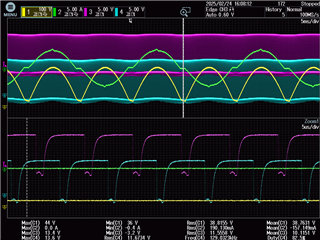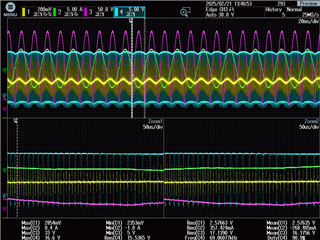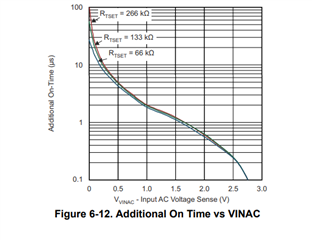Other Parts Discussed in Thread: UCC28063, UCC28064A
Tool/software:
Dear sir,
Customer: Delta Lighting time and Outside Lighting application.
At the input voltage zero-crossing, there is a significant difference in the Ton time between UCC28065 and UCC28063.
Figure 1: CH1:Vin CH2:Iin CH3:Vgs_Q1 CH3:Vgs_Q2

Figure 2: CH1:Vcomp CH2:Iin CH3:Vin CH3:Vgs_Q2

Figure 2 shows that the Ton time of UCC28063 at the zero-crossing point exceeds 20us, while Figure 1 shows the Ton time of UCC28065 at the zero-crossing point is approximately 7us.
Figure 3: CH1:Vin CH2:Iin CH3:Vgs_Q1 CH3:Vgs_Q2

Figure 3 demonstrates that after changing the external resistor of the TSET pin of UCC28065 from 140Kohm to 75Kohm, the Ton time did not increase significantly.
This part has a very large impact on THDi. Whether there are any other peripheral parameters that can influence the Ton time in this section? Or is there inherently a difference in the Ton time at the zero-crossing point between UCC28065 and UCC28063?
Nice day!
Regards,
Jack


